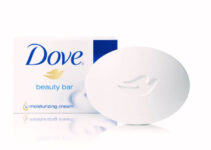AirAsia is a Malaysian low-cost airline and aviation multinational corporation. It started its operations in 1933. Today, we’ll discuss the marketing mix of AirAsia; the 4Ps and 7Ps of AirAsia elements involved in the mix; product mix strategy, price, place, promotion, people, process, and physical evidence of the aviation brand as marketing mix Example Company.
The marketing mix of AirAsia would analyze the 4Ps and 7Ps of AirAsia elements involved in the mix; product, price, place, promotion, people, process, and physical evidence. Here’s the AirAsia marketing mix example company as follows;
Marketing Mix of AirAsia
Let’s discuss the 4Ps and 7Ps of AirAsia elements involved in the marketing mix of AirAsia as marketing mix Example Company; they’re as follows;
Product Mix Strategy of AirAsia
I-Diversified Service Portfolio
AirAsia has established a reputation for low-cost flight services to domestic and international routes. The aviation brand has developed a well-diversified portfolio comprising of wide range of products and services over the years. Some of the main products and services of AirAsia Airlines are as follows;
- Health & Wellness – recognizes the growth of the health industry and offers health and wellness products
- Financial – e-wallet services and co-branded credit cards
- Telecommunication – data plans, sim cards, and other mobile services
- Insurance – insurance plans to cover travel-related accidents
- In-Flight – in-flight services like entertainment, food, beverages,
- Cargo – employing cargo hold spaces in the passenger aircraft fleet
- Premium – comforting flatbed on long flights, business class service
Price Strategy of AirAsia
I-Competitive Pricing
AirAsia implements a competitive pricing strategy relevant to the low-cost airlines in the aviation industry. The company focuses on offering low fair to similar routes with better-optimized services. However, it helps the company to strengthen its market position and develop a budget-friendly brand image.
II-Dynamic Pricing
AirAsia also follows a dynamic pricing strategy. It means that the company charges different prices from various customers depending on various factors; booking lead time, seasonality, demand, and others. However, it helps the company to increase its revenue by exploiting the particular situation.
III-Promotional Offers
AirAsia introduces discounts and promotional offers to attract the attention of customers during the less crowded and off-season. In order to create a sense of urgency, the company creates time-bound limited offers.
IV-Low cost
AirAsia has precisely targeted the price-sensitive customer market by offering low-cost air travel. The company does so by offering only air travel without offering additional services like meals, baggage, or seat selection.
Place Strategy of AirAsia
I-Alliance & Partnerships
AirAsia develops partnerships and alliances with various local and global carriers to amplify its market reach. It helps the company’s aviation brand to offer more destination routes to the large segments of the customer market.
II-Mobile Applications
In order to approach online customers and strengthen the company’s position digitally, AirAsia has developed a mobile application and web platform to make traveling arrangements online.
III-Hub Locations
The low-cost aviation brand AirAsia chooses various hub airports in different cities across the globe to support convenience and promote efficient operations worldwide.
IV-Using 2nd Airports
AirAsia often employs secondary airports in less crowded and suburban areas to keep their costs low. The objective of the company is to offer efficiency and convenience to the customers.
Promotion Strategy of AirAsia
I-Promotional Offers
AirAsia launches various types of promotional campaigns like discounts on particular seasons, holidays, or cultural festivals. It allows the company to attract the attention of a specific segment of the customer market.
II-Sponsorships
Along with developing strategic alliances with various airline companies; AirAsia also sponsors various sporting events and tourism. They are complementary to the airline industry and help the company to amplify its sales and revenue.
III-Digital Marketing
AirAsia invests a significant amount of capital resources in running digital marketing and advertisement campaigns. They could be in the form of online advertisement, email marketing, and social media marketing.
We have just discussed the 4Ps of AirAsia; the remaining three elements are part of the 7Ps of AirAsia marketing mix Example Company; they’re as follows;
People Strategy of AirAsia
AirAsia has employed roundabout 23000 employees and earned a very loyal database of customers. The aviation brand pays significant attention to its employees and considers them as valuable assets of the brand. In order to increase their morale and confidence level, the aviation brand offers them training and development programs.
Processes of AirAsia
AirAsia has set up a very committed and efficient customer support team and they focus on resolving customer complaints and issues within 24 hours. The aviation brand strongly believes in the fact that the customers are the key to its growth and success. In fact, the company gives top priority to its customers.
Physical Evidence of AirAsia
The large fleet size, brand logo, employees, and loyal database of customers are the physical evidence of AirAsia’s existence in the aviation industry. The red and white brand color symbolizes various emotions. For instance, the red color stands for passion and determination; the white color stands for positivity and perfection.
Conclusion: AirAsia Marketing Mix Example Company | 4Ps of AirAsia and 7Ps of AirAsia Marketing Mix
After an in-depth study of the marketing mix of AirAsia; we have realized that AirAsia is the world’s leading low-cost Malaysian airline. If you are learning about the AirAsia marketing mix example company; then you should keep in mind the abovementioned 4Ps and 7Ps of AirAsia; product, price, place, promotion, people, process, and physical evidence.

Ahsan is an accomplished researcher and has a deep insight in worldly life affairs. He goes Live 3 days a week on various social media platforms. Other than research writing, he’s a very interesting person.


